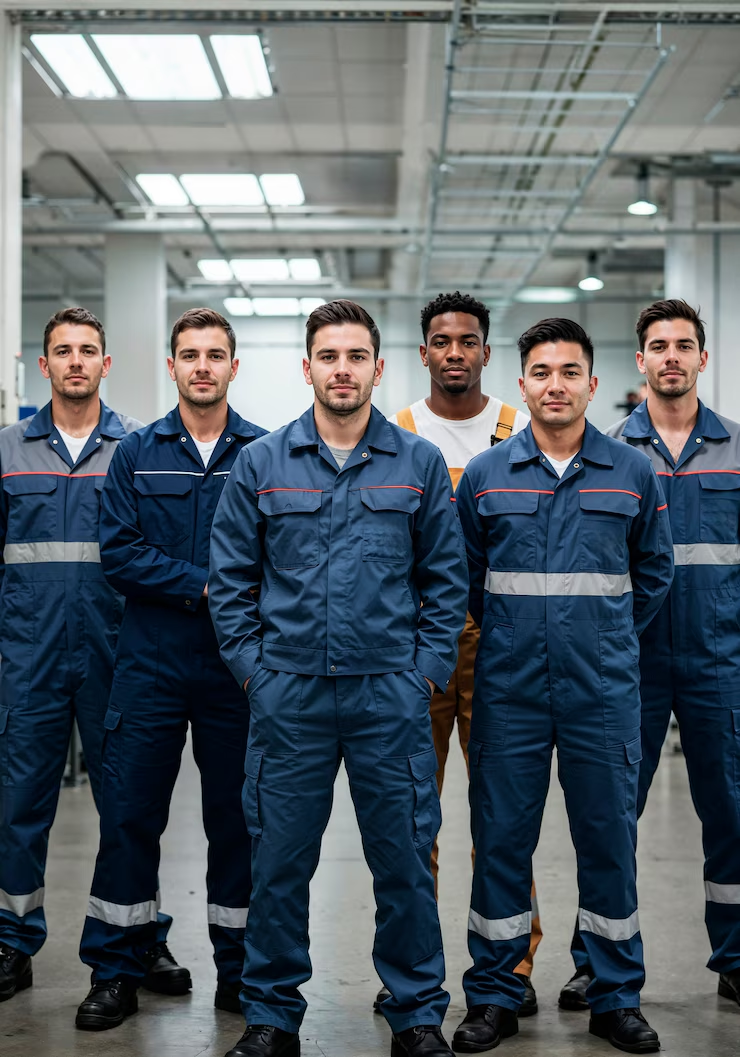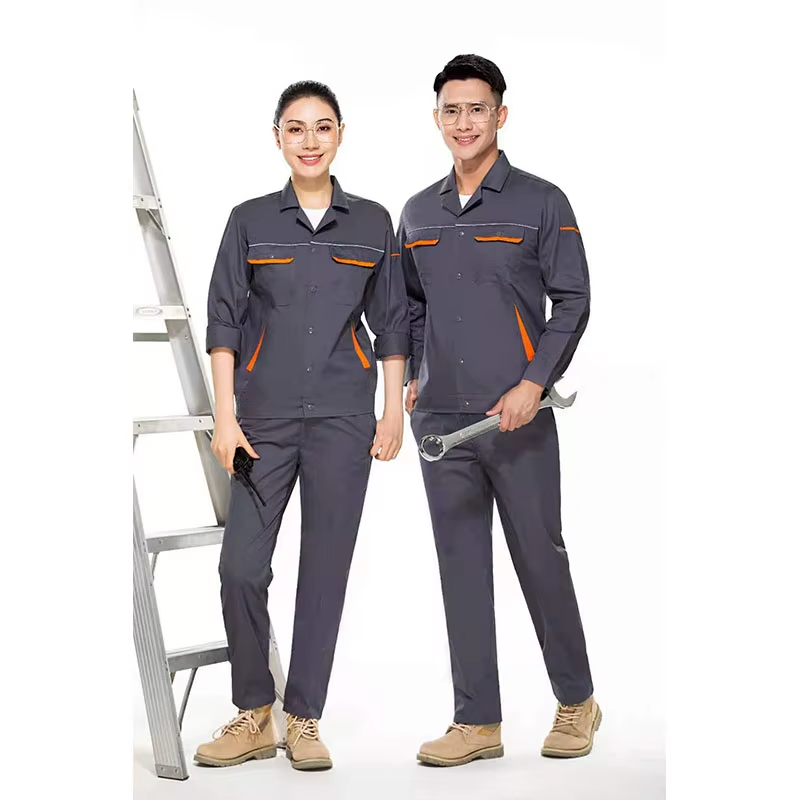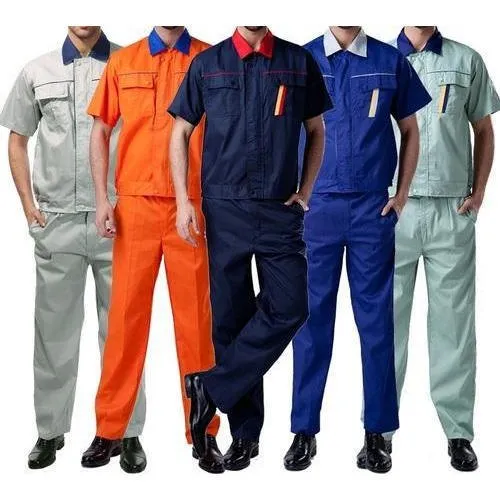INDUSTRIAL UNIFORM
An industrial uniform is specialized clothing worn by workers in industrial settings—such as factories, manufacturing plants, construction sites, oil & gas fields, and warehouses. These uniforms are designed for safety, durability, comfort, and functionality depending on the specific hazards of the job. Here's a detailed description of a typical industrial uniform
1. Fabric & Material Durability:
a. Constructed from robust materials such as blended fabrics (e.g., poly-cotton), cotton, or polyester.
b. Fire Resistance: Materials that are flame-retardant (FR) for tasks that involve open flames or high temperatures.
c.Chemical Resistance: Specific coatings for areas where chemicals are handled.
d.Breathability: For comfort in hot conditions, fabrics frequently feature moisture-wicking qualities.
e.Anti-static Properties: Used to stop static discharge in explosive settings or electronics.
2. Components & Design of the Jacket/Shirt:
a.full-sleeved to protect the arms.
b. button or front zipper closure.
c.Several pockets for pens or tools.
d.elbows that are reinforced for increased durability.
e.Reflective tape or high-visibility stripes for safety in poor light.
A. Overalls/trousers:For ease of movement, wear a straight or slightly loose fit.
knee pad inserts or tool pockets.
belt loops or a waistline with elastic.
For durability, double stitching is used.
materials that are water-resistant or flame-retardant in dangerous areas.
Boiler suits, or coveralls:
One-piece suit, frequently with a zipper.
offers protection for the entire body.
prevalent in the chemical, oil, and gas sectors.
Wearing it over personal clothing is simple.
Compatibility of Footwear:
Made to be worn with safety boots (steel toe, non-slip, and resistant to punctures).
3. Safety Elements
a.Reflective strips: To improve visibility in dimly light or busy places.
b. Treatment that resists fire: guards against open flames or sparks.
c. Vibrant hues such as orange, yellow, or neon green are considered high visibility colors.
d. ID patches and name tags: For simple identification, they are frequently stitched or Velcroed.e. Heat Resistance: For foundry or welding personnel.
4. Industry-Specific Add-ons: reinforced knees, tool loops, and hi-vis vests.
a. Chemical Plants: Goggles, rubber boots, and coatings that prevent chemical splashes.
b. Oil and Gas: Gas detector loops and hooded, flame-retardant, antistatic coveralls.
c. Food processing: hygienic slip-resistant shoes, hairnets, and white lab coats.
d. Rubber-insulated gloves and materials with an arc flash rating are required for electrical work.
STYLE LIBRARY








Blog Post
Related Tag
aviation uniform1
coat pant1
Construction uniform1
construction uniform riyadh1
cook jacket uniform1
cook uniform0
corporate uniform1
corporate uniform in riyadh1
corporate uniform tailor1
hotel uniform1
hotel uniform in riyadh1
industrial uniform1
industrial uniform in riyadh1
industrial uniform shop in riyadh1
kitchen staff1
ladys coat0
ladys office uniform1
madarsa uniform0
mens coat1
mens office uniform1
mens's suit0
office uniform1
pant & shirt1
pilot uniform1
restaurant uniform1
restaurant uniform in jeddah1
restaurant uniform in riyadh1
restaurant uniform near me1
riyadh uniform0
safety uniform2
safety uniform in riyadh1
salon uniform1
saloon uniform0
school uniform1
school uniform near me0
spa & salon uniform1
spa uniform0
tailor shop near me1
technical uniform1
technical uniform in riyadh1
technical uniform shop in riyadh1
unifor riyadh0
uniform corporate1
uniform in riyadh1
uniform riyadh6
uniform shop2
uniform shop in riyadh1
uniform supplier in riyadh1







